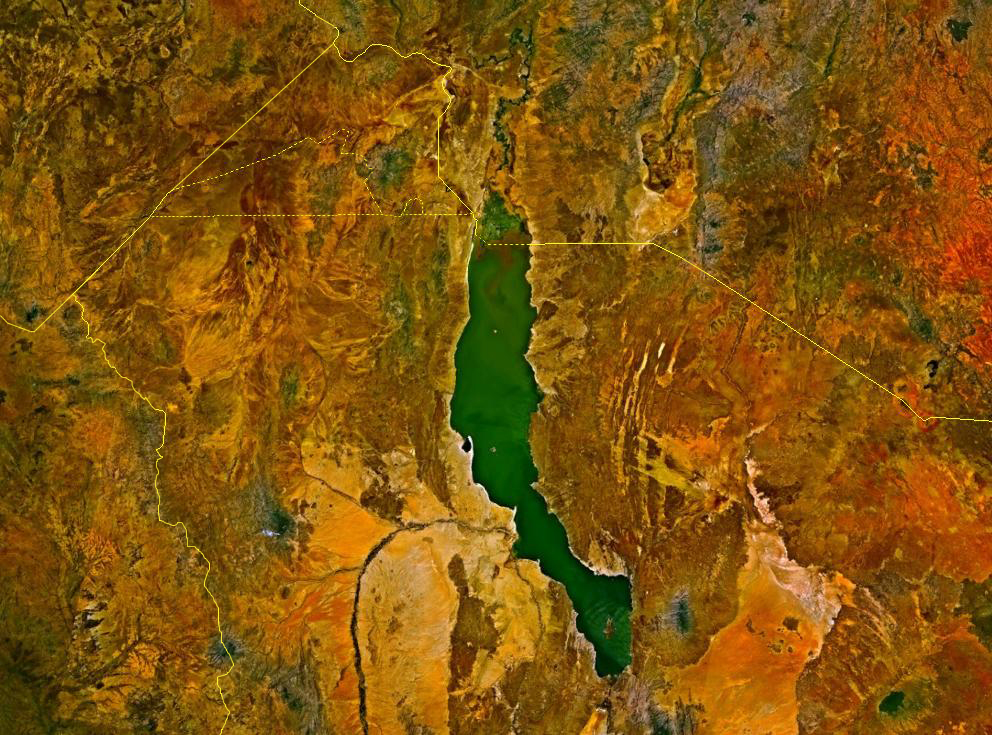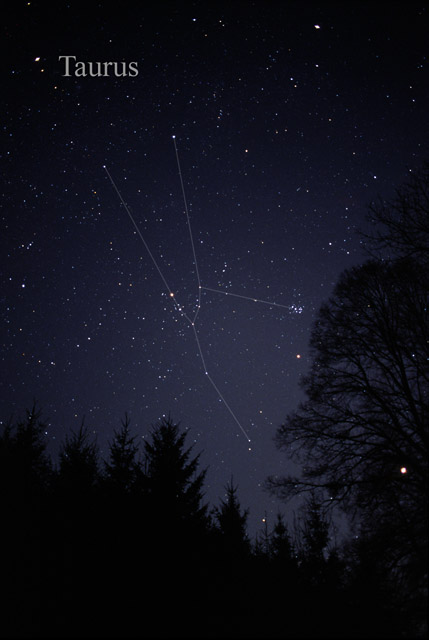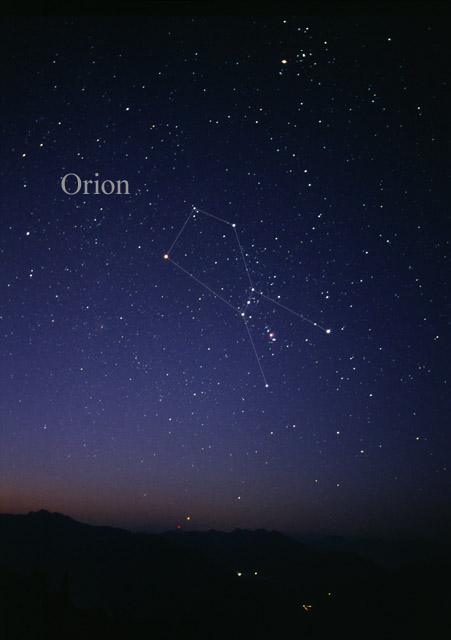|
Namoratunga
The Nasura Pillar Site, registered as GcJh3 and also known as Namoratunga II, is an archaeological site on the west side of Lake Turkana in Kenya dating to the Pastoral Neolithic. Namoratunga means "people of stone" in the Turkana language. The site was originally believed to have been created around 300 BC, but recent excavations have yielded an older radiocarbon sample dating to 2398 +/- 44 years BC. Background The site is easily visible on the Lodwar – Kalokol roadside, from the road. The Kalokol Pillar Site contains 19 basalt pillars which are surrounded by a circular formation of stones. A number of other pillar sites surround Lake Turkana as well and date to the same time period; Lothagam North and Manemanya, for example, are communal cemeteries. These sites were likely built by the region's earliest herders. Another burial site with stone cairns, Namoratunga I, also known as Lokori, does not have stone pillars. Archaeologists Mark Lynch and L.H. Robbins described t ... [...More Info...] [...Related Items...] OR: [Wikipedia] [Google] [Baidu] |
Lokori
Lokori is a Turkana settlement in Kenya's North Eastern Province, adjacent to the Kerio River. The settlement's inhabitants are traditionally pastoralists. Lokori is home to a number of prehistoric Namoratunga rock art and burial sites. Geography Lokori is located in southern Turkana District, south of Lake Turkana, and less than 1 kilometer southwest of the banks of the Kerio River. The town is south of Kitale, Lokichar and Loperot, northeast of South Turkana National Reserve, and located at the intersection of the C113 and C46 highways. The Loriu Plateau lies to the east. Geology Lokori is located in the Turkana Basin, a part of the East African Rift Valley. Sediments and volcanic rocks around Lokori in south Turkana range in age from 17 million years old to present. Volcanic activity appears to have occurred in 6 major instances of eruption. Ecology Ecologically, Lokori and the surrounding area are fairly representative of the habitats and land types found throughout so ... [...More Info...] [...Related Items...] OR: [Wikipedia] [Google] [Baidu] |
Borana Calendar
The Borana calendar is a calendrical system once thought to have been used by the Borana Oromo, a people living in southern Ethiopia and northern Kenya ) , national_anthem = " Ee Mungu Nguvu Yetu"() , image_map = , map_caption = , image_map2 = , capital = Nairobi , coordinates = , largest_city = Nairobi , .... The calendar has been claimed to be based on an earlier Cushitic calendar, developed around 300 BC found at Namoratunga. However, reconsideration of the Namoratunga site led astronomer and archaeologist Clive Ruggles to conclude that there is no relationship. The Borana Oromo people, Borana calendar consist of 29.5 days and 12 months for a total 354 days in a year. The calendar has no weeks but name for each day of the month. It is a lunar-stellar calendar system. [...More Info...] [...Related Items...] OR: [Wikipedia] [Google] [Baidu] |
Lake Turkana
Lake Turkana (), formerly known as Lake Rudolf, is a lake in the Kenyan Rift Valley, in northern Kenya, with its far northern end crossing into Ethiopia. It is the world's largest permanent desert lake and the world's largest alkaline lake. By volume it is the world's fourth-largest salt lake after the Caspian Sea, Issyk-Kul, and Lake Van (passing the shrinking South Aral Sea), and among all lakes it ranks 24th. Lake Turkana is now threatened by the construction of Gilgel Gibe III Dam in Ethiopia due to the damming of the Omo river which supplies most of the lake's water. Although the lake commonly has been —and to some degree still is— used for drinking water, its salinity (slightly brackish) and very high levels of fluoride (much higher than in fluoridated water) generally make it unsuitable, and it has also been a source of diseases spread by contaminated water. Increasingly, communities on the lake's shores rely on underground springs for drinking water. The ... [...More Info...] [...Related Items...] OR: [Wikipedia] [Google] [Baidu] |
Pleiades
The Pleiades (), also known as The Seven Sisters, Messier 45 and other names by different cultures, is an asterism and an open star cluster containing middle-aged, hot B-type stars in the north-west of the constellation Taurus. At a distance of about 444 light years, it is among the nearest star clusters to Earth. It is the nearest Messier object to Earth, and is the most obvious cluster to the naked eye in the night sky. It is also observed to house the reflection nebula NGC 1432, an HII Ionized region. The cluster is dominated by hot blue luminous stars that have formed within the last 100 million years. Reflection nebulae around the brightest stars were once thought to be left over material from their formation, but are now considered likely to be an unrelated dust cloud in the interstellar medium through which the stars are currently passing. This dust cloud is estimated to be moving at a speed of approximately 18 km/s relative to the stars in the cluster. Compute ... [...More Info...] [...Related Items...] OR: [Wikipedia] [Google] [Baidu] |
Sirius
Sirius is the brightest star in the night sky. Its name is derived from the Greek word , or , meaning 'glowing' or 'scorching'. The star is designated α Canis Majoris, Latinized to Alpha Canis Majoris, and abbreviated Alpha CMa or α CMa. With a visual apparent magnitude of −1.46, Sirius is almost twice as bright as Canopus, the next brightest star. Sirius is a binary star consisting of a main-sequence star of spectral type A0 or A1, termed Sirius A, and a faint white dwarf companion of spectral type DA2, termed Sirius B. The distance between the two varies between 8.2 and 31.5 astronomical units as they orbit every 50 years. Sirius appears bright because of its intrinsic luminosity and its proximity to the Solar System. At a distance of , the Sirius system is one of Earth's nearest neighbours. Sirius is gradually moving closer to the Solar System, so it is expected to increase in brightness slightly over the next 60,000 years, reaching a peak magnitude of ... [...More Info...] [...Related Items...] OR: [Wikipedia] [Google] [Baidu] |
Saiph
Saiph , designation Kappa Orionis (κ Orionis, abbreviated Kappa Ori, κ Ori) and 53 Orionis (53 Ori), is the sixth-brightest star in the constellation of Orion. Of the four bright stars that compose Orion's main quadrangle, it is the star at the south-eastern corner. A northern-hemisphere observer facing south would see it at the lower left of Orion, and a southern-hemisphere observer facing north would see it at the upper right. Parallax measurements yield an estimated distance of from the Sun, which is about the same as Betelgeuse. It is smaller, less luminous but hotter at its surface than Rigel with an apparent visual magnitude of 2.1. The luminosity of this star changes slightly, varying by 0.04 magnitudes. Nomenclature ''Kappa Orionis'' is the star's Bayer designation and ''53 Orionis'' its Flamsteed designation. The traditional name ''Saiph'' is from the Arabic ''saif al jabbar'', 'سیف الجبّار' literally '' saif of the giant''. This name was origin ... [...More Info...] [...Related Items...] OR: [Wikipedia] [Google] [Baidu] |
Orion (constellation)
Orion is a prominent constellation located on the celestial equator and visible throughout the world. It is one of the most conspicuous and recognizable constellations in the night sky. It is named after Orion, a hunter in Greek mythology. Its brightest stars are the blue-white Rigel (Beta Orionis) and the red Betelgeuse (Alpha Orionis). Characteristics Orion is bordered by Taurus to the northwest, Eridanus to the southwest, Lepus to the south, Monoceros to the east, and Gemini to the northeast. Covering 594 square degrees, Orion ranks twenty-sixth of the 88 constellations in size. The constellation boundaries, as set by Belgian astronomer Eugène Delporte in 1930, are defined by a polygon of 26 sides. In the equatorial coordinate system, the right ascension coordinates of these borders lie between and , while the declination coordinates are between and . The constellation's three-letter abbreviation, as adopted by the International Astronomical Union in 1922, is "Ori ... [...More Info...] [...Related Items...] OR: [Wikipedia] [Google] [Baidu] |
Aldebaran
Aldebaran (Arabic: “The Follower”, "الدبران") is the brightest star in the zodiac constellation of Taurus. It has the Bayer designation α Tauri, which is Latinized to Alpha Tauri and abbreviated Alpha Tau or α Tau. Aldebaran varies in brightness from an apparent visual magnitude 0.75 down to 0.95, making it (typically) the fourteenth-brightest star in the night sky. It is located at a distance of approximately 65 light-years from the Sun. The star lies along the line of sight to the nearby Hyades cluster. Aldebaran is a giant star that is cooler than the Sun with a surface temperature of , but its radius is about 44 times the Sun's, so it is over 400 times as luminous. It spins slowly and takes 520 days to complete a rotation. Aldebaran is believed to host a planet several times the mass of Jupiter, named . The planetary exploration probe Pioneer 10 is heading in the general direction of the star and should make its closest approach in about two millio ... [...More Info...] [...Related Items...] OR: [Wikipedia] [Google] [Baidu] |
Bellatrix
Bellatrix is the third-brightest star in the constellation of Orion, positioned 5° west of the red supergiant Betelgeuse (Alpha Orionis). It has the Bayer designation γ Orionis, which is Latinized to Gamma Orionis. With a slightly variable magnitude of around 1.6, it is typically the 25th-brightest star in the night sky. Located at a distance of 250 light-years from the Sun, it is a blue giant star around 7.7 times as massive as the sun with 5.75 times its diameter. Nomenclature The traditional name ''Bellatrix'' is from the Latin ''bellātrix'' "female warrior"; it first appeared in the works of Abu Ma'shar al-Balkhi and Johannes Hispalensis, where it originally referred to Capella, but was transferred to Gamma Orionis by the Vienna school of astronomers in the 15th century, and appeared in contemporary reprints of the '' Alfonsine tables''. In 2016, the International Astronomical Union organized a Working Group on Star Names (WGSN) to catalog and standa ... [...More Info...] [...Related Items...] OR: [Wikipedia] [Google] [Baidu] |
Ethiopia
Ethiopia, , om, Itiyoophiyaa, so, Itoobiya, ti, ኢትዮጵያ, Ítiyop'iya, aa, Itiyoppiya officially the Federal Democratic Republic of Ethiopia, is a landlocked country in the Horn of Africa. It shares borders with Eritrea to the Eritrea–Ethiopia border, north, Djibouti to the Djibouti–Ethiopia border, northeast, Somalia to the Ethiopia–Somalia border, east and northeast, Kenya to the Ethiopia–Kenya border, south, South Sudan to the Ethiopia–South Sudan border, west, and Sudan to the Ethiopia–Sudan border, northwest. Ethiopia has a total area of . As of 2022, it is home to around 113.5 million inhabitants, making it the List of countries and dependencies by population, 13th-most populous country in the world and the List of African countries by population, 2nd-most populous in Africa after Nigeria. The national capital and largest city, Addis Ababa, lies several kilometres west of the East African Rift that splits the country into the African Plate, Africa ... [...More Info...] [...Related Items...] OR: [Wikipedia] [Google] [Baidu] |
Triangulum
Triangulum is a small constellation in the northern sky. Its name is Latin for " triangle", derived from its three brightest stars, which form a long and narrow triangle. Known to the ancient Babylonians and Greeks, Triangulum was one of the 48 constellations listed by the 2nd century astronomer Ptolemy. The celestial cartographers Johann Bayer and John Flamsteed catalogued the constellation's stars, giving six of them Bayer designations. The white stars Beta and Gamma Trianguli, of apparent magnitudes 3.00 and 4.00, respectively, form the base of the triangle and the yellow-white Alpha Trianguli, of magnitude 3.41, the apex. Iota Trianguli is a notable double star system, and there are three star systems with known planets located in Triangulum. The constellation contains several galaxies, the brightest and nearest of which is the Triangulum Galaxy or Messier 33—a member of the Local Group. The first quasar ever observed, 3C 48, also lies within the boundaries of Tria ... [...More Info...] [...Related Items...] OR: [Wikipedia] [Google] [Baidu] |
Archaeology
Archaeology or archeology is the scientific study of human activity through the recovery and analysis of material culture. The archaeological record consists of Artifact (archaeology), artifacts, architecture, biofact (archaeology), biofacts or ecofacts, archaeological site, sites, and cultural landscapes. Archaeology can be considered both a social science and a branch of the humanities. It is usually considered an independent academic discipline, but may also be classified as part of anthropology (in North America – the four-field approach), history or geography. Archaeologists study human prehistory and history, from the development of the first stone tools at Lomekwi in East Africa 3.3 million years ago up until recent decades. Archaeology is distinct from palaeontology, which is the study of fossil remains. Archaeology is particularly important for learning about prehistoric societies, for which, by definition, there are no written records. Prehistory includes ove ... [...More Info...] [...Related Items...] OR: [Wikipedia] [Google] [Baidu] |
_tortilis.jpg)







.jpg)